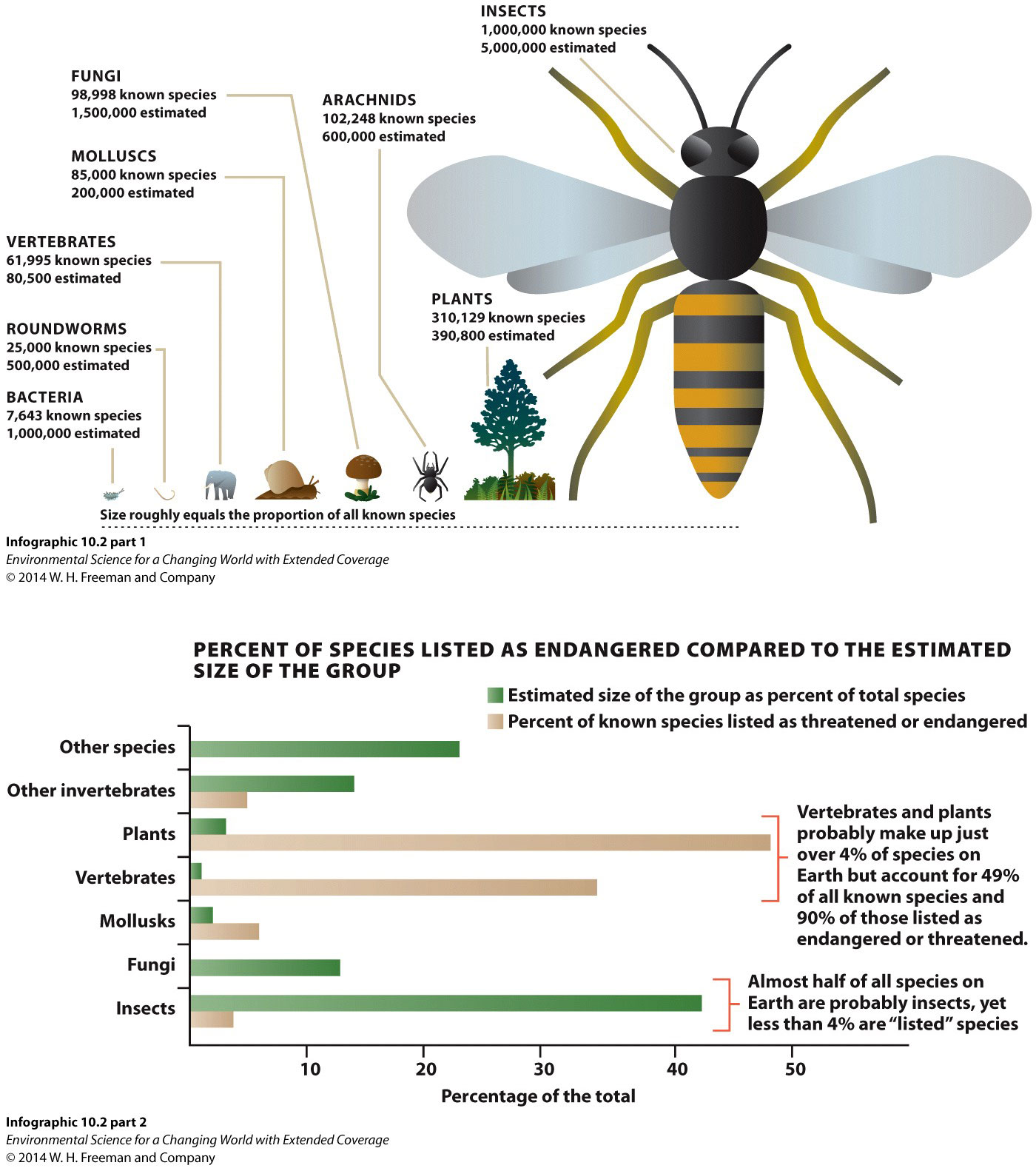
Chapter 10. Chapter 10: Biodiversity
What is the estimated total number of species on Earth...?

Guiding Question 10.2
What is the estimated total number of species on Earth, and which taxonomic groups have the most species? How sure are we of these numbers? Why?
Why You Should Care
The estimated number of species on the planet varies quite a bit (from 3 to 100 million species). This disparity is basically due to the difficulty in knowing how little you know before you know it. There are several reasons to care about how many species there are. First, it gives us an indication of where scientific study needs to be directed. Second, knowing which groups have many species gives us an indication of which groups are likely to have species with narrow or specific niches or global importance. Lastly, knowing how many species there are out there gives you a new appreciation for the world around you.

1.
Scientists have identified approximately ________ species.
| A. |
| B. |
| C. |
| D. |
2.
Most of the known species on Earth are .
3.
The second largest group of known species are .
4.
The group with the smallest number of estimated species is the .
5.
Do the math: Which group has the fewest known species per estimated species? (To find your answer, divide the number of known species by the number of estimated species and find the lowest number.)
6.
Which two groups have the highest proportion of known species?
Plants
Fungi
Bacteria
Roundworms
Insects
Vertebrates
7.
Thought Question: What does it mean for a species to be "known"?
8.
Thought Question: Whether you consider the total number of known species, the percent of (estimated) total species identified, or both, humans are obviously interested in plants, insects, and vertebrate animals since so many of them have been identified. Can you think of any other reason that large numbers of plants, insects, or vertebrates have been identified? Why is a group like roundworms poorly described?
Activity results are being submitted...